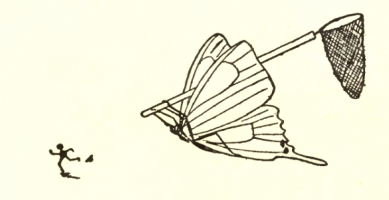 Title: Attractive names sustain increased vegetable intake in schools
Title: Attractive names sustain increased vegetable intake in schools
What Caught Our Attention: One thing can be said for the corrections for Brian Wansink‘s papers — they aren’t short. After James Heathers outlined some of his concerns about the highly cited study back in March, 2017, the journal has issued a correction, and it’s longer (1636 words) than the original, highly cited paper (1401 words). Some of the changes include explaining the children studied were preschoolers (3-5 years old), not preteens (8-11), as originally claimed. (It may be hard to imagine how the authors could make such a mistake, but they did it once before, in another retracted paper.) Even with all those words explaining the correction — we’re only including an excerpt of the entire notice below — some concerns still remain:
Brian Wansink has another correction (https://t.co/ZASZ1U2XKK). It's extremely odd that it isn't a retraction. pic.twitter.com/XJJdlpkfI9
— Tim van der Zee (@Research_Tim) February 3, 2018
Nick Brown, a PhD student who’s paid close attention to Wansink’s work, has also analyzed the latest correction, and concluded:
If the correction is indeed correct, the original article got almost everything wrong: the ages and school status of the participants, the number of days on which the study was run, the number of participants, and the number of outcome measures. We have an explanation of sorts for the first of these problems, but not the others.
Wansink is now up to 14 corrections, with six retractions.
Journal: Preventive Medicine
Authors: Brian Wansink, David R Just, Collin R Payne, Matthew Z Klinger
Affiliations: Cornell University, NY, USA; New Mexico State University, NM, USA; Half Hollow Hills High School East, NY, USA;
Study 1 was originally described as involving 8–11 year old children from five elementary schools. This has been corrected to indicate the children participating in the study were Head Start preschoolers (3–5 years old), many of whom were in programs that met in elementary schools. There are other additional corrections to the data in Table 1 and additional details provided in the methodology. We regret these errors. These mistakes and omissions do not change the general conclusion of the paper that attractive names increase vegetable intake in schools across a wide age-range of children (in Study 1 with preschool-aged children and in Study 2 with elementary school-aged children). The data, script files, and log files are publically available at doi:https://doi.org/10.6077/J5CISER2797. The script and log files are also provided in Appendix 1.
1. Age of the children
Study 1 was planned in 2007, but it was conducted in the Spring of 2008 shortly after the first author was asked to take a 15-month leave-of-absence to be the Executive Director for USDA’s Center for Nutrition Policy and Promotion in Washington DC. It was decided that this short study could be more impactful if it was used to introduce a larger, longer field study (Study 2) which would serve as the centerpiece for a more substantial paper. The manuscript describing this pair of studies did not end up being drafted until about three years after the data for Study 1 had been collected. At this point, the lab manager, post-doctoral student, and research assistants involved in the data collection for this study had moved away. The portion of the data file that we used for the study had the name of each student and the location where their data was collected but not their age. Four factors led us to wrongly assume that the students in Study 1 must have been elementary school students:
1) The majority of students were tested in elementary schools.
2) The intervention involved printed signs, making us believe the students must have been of reading age (8–11 years-old).
3) Study 2 in the paper involved elementary school students at a different location.
4) The default age in many of our lunchroom studies is 8–11 years-old.
This mistake was discovered upon locating overlooked documents from 2007 and 2008. These documents indicated that although the majority of these children were tested in elementary schools, they were actually Head Start preschoolers whose programs simply met in elementary schools. It was also discovered that although the attractive names were written on the signs in front of the food, the caregivers very carefully read the signs to each of the students. That is, the children did not have to read in order for the signs to be effective.
There are two studies in this paper. Study 1 is a short consumption study among these preschoolers to show that descriptive labels can increase the intake of healthy food. Study 2 – the main study – was conducted on elementary students. This study showed that a) this effect persists for least a month and that b) it is so easy to implement in elementary schools that even high school students could help schools make this scalable if they were given simple instructions and guidance … The conclusions of both studies and the conclusions of the paper remain strong after correcting for these errors: Giving attractive names to healthy foods encourage young children of a wide range of ages – specifically from preschool age to elementary school age – to eat more of these foods. We regret these errors as well as the confusion they caused to Preventive Medicine and to readers.
Date of Article: July 2012
Times Cited, according to Clarivate Analytics’ Web of Science: 62, and a “Highly Cited Paper”
Date of Notice: February 1, 2018
Like Retraction Watch? You can make a tax-deductible contribution to support our growth, follow us on Twitter, like us on Facebook, add us to your RSS reader, sign up on our homepage for an email every time there’s a new post, or subscribe to our daily digest. If you find a retraction that’s not in our database, you can let us know here. For comments or feedback, email us at [email protected].